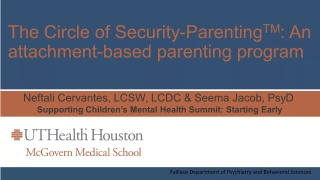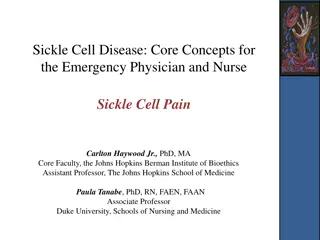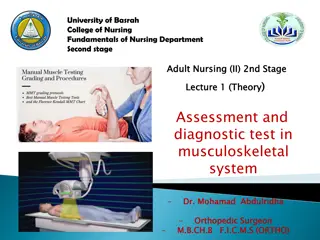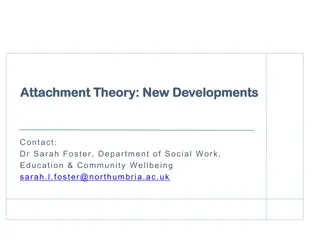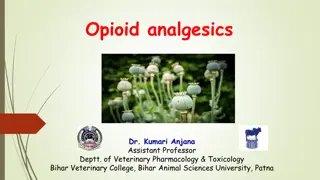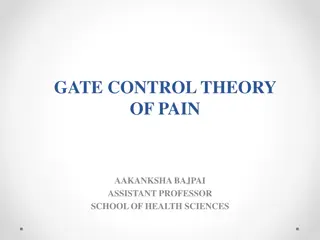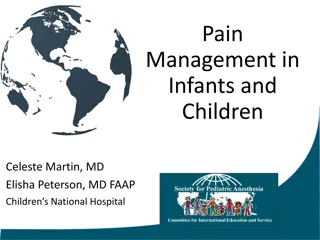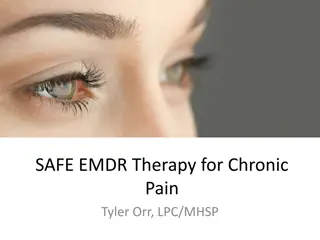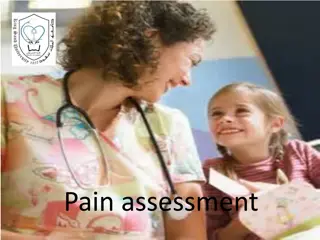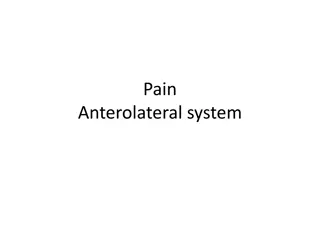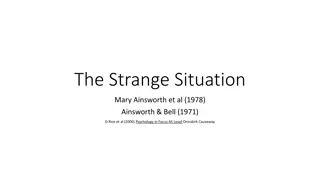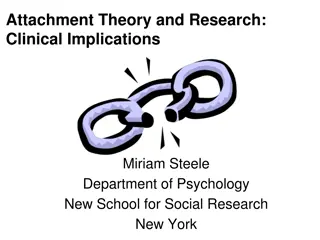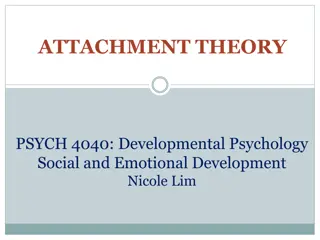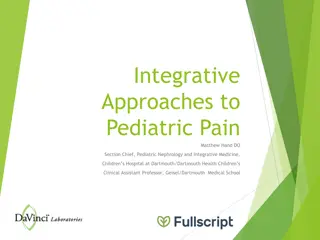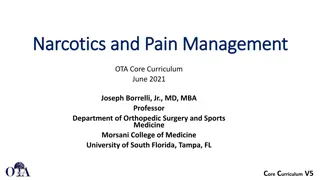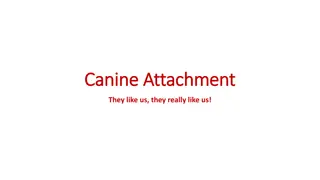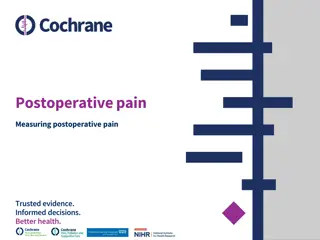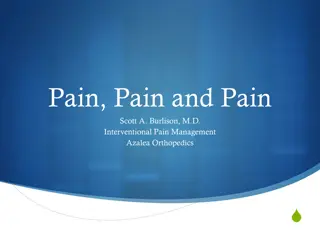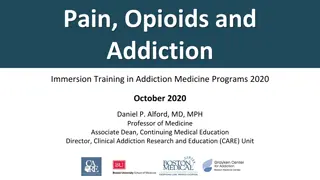The Pain of Breakups Through Attachment Theory
Exploring the intense emotional pain of breakups, this presentation delves into Bowlby's Attachment Theory to elucidate the deep bonds that connect individuals and the biological instincts that drive the need for closeness during times of discomfort or threat. Through poignant breakup songs, personal reflections, and professional insights, the audience is guided to identify mental health risks, understand natural grief responses, support students post-breakup, recognize signs of unhealthy relationships, and be mindful of suicide warning signs.
Download Presentation

Please find below an Image/Link to download the presentation.
The content on the website is provided AS IS for your information and personal use only. It may not be sold, licensed, or shared on other websites without obtaining consent from the author. Download presentation by click this link. If you encounter any issues during the download, it is possible that the publisher has removed the file from their server.
E N D
Presentation Transcript
BREAKING UP IS HARD TO DO ~ N E I L S E D A K A U N D E R S TA N D I N G A N D S U P P O RT I N G J O B C O R P S S T U D E N T S T H R O U G H R E L AT I O N S H I P B R E A K U P S
PRESENTER INFORMATION: Helena Mackenzie, PhD, LP Region 5 Mental Health Specialist
OBJECTIVES: D E S C R I B E H OW AT TA C H M E N T T H E O RY H E L P S E X P L A I N T H E I N T E N S E PA I N O F B R E A K U P S I D E N T I F Y 2 M E N TA L H E A LT H R I S K S F O L L OW I N G A R E L AT I O N S H I P B R E A K U P L I S T 3 N AT U R A L G R I E F R E S P O N S E S F O L L OW I N G R E L AT I O N S H I P L O S S I D E N T I F Y 2 WAY S TO B E S T S U P P O RT S T U D E N T S P O S T B R E A K U P L I S T 3 R E A S O N S R E L AT I O N S H I P S M AY FA I L L I S T 2 S I G N S O F H E A LT H Y A N D U N H E A LT H Y R E L AT I O N S H I P S I D E N T I F Y 2 S U I C I D E WA R N I N G S I G N S
When you're gone, the pieces of my heart are missin' you (Avril Lavigne) I hate to turn up out of the blue uninvited, but I couldn't stay away, I couldn't fight it. I had hoped you'd see my face, and that you be reminded that for me it isn't over (Adele) Thought I couldn't breathe without you, I'm inhaling (Destiny s Child) "It's been so lonely without you here / I'm like a bird without a song / Nothing can stop this lonely rain from falling / Tell me, baby, where did I go wrong (Prince) "I wanted you to know / That I am ready to go, heartbeat (Childish Gambino) "I'll have another you by tomorrow / So don't you ever for a second / Get to thinking you're irreplaceable (Beyonce) "I should live in salt for leaving you behind, behind (The National) "I know a man ain't supposed to cry / But these tears I can't hold inside / Losin' you would end my life you see / 'Cause you mean that much to me (Marvin Gaye) BREAKUP SONGS
REMEMBER WHEN RECALL ONE OF YOUR EARLIEST RELATIONSHIP BREAKUPS
WHY IS BREAKING UP SO PAINFUL? Bowlby s Attachment Theory Attachment is a deep and enduring emotional bond that connects one person to another across time and space (Bowlby, 1969) Biological instinct for survival seek closeness during times of discomfort or perceived threat.
ATTACHMENT STYLES: MARY AINSWORTH S STRANGE SITUATION Mary Ainsworth (1970s): Strange Situation Secure attachment (~55-60%): caregivers consistently available and responsive, child feels worthy of love, can rely on others, manage emotions, able to be soothed Anxious-ambivalent attachment (~20%): inconsistently available caretakers, child fears rejection, seeks reassurance, afraid to be apart, clinging behavior, difficulty being soothed Anxious-avoidant(~20%): caregivers not available and responsive. Child has learned not to seek caregiver for soothing, doesn t show distress, but feels it. Disorganized (<5%): chaotic, abusive caregiver behaviors lead to child to feel confused and exhibit freezing, odd behaviors, need caregiver for protection but also afraid of them. Attachment system triggered by perceived threat or distress Separation Rejection Emotional unavailabiliity Attachment style is based on relationship with caregiver and how child has learned to get attachment needs met
ATTACHMENT STYLES IN ADULTHOOD IMPACT ON ROMANTIC RELATIONSHIPS Adult Attachment Styles Hazen and Shaver (1987) expanded Bowlby s theory to adult romantic partners. Adult Attachment Interview by Mary Main and colleagues (1984)-- Secure: (~55%) comfortable with self and partner, can balance intimacy and independence. Seek partner support when distressed and provide support when partner distressed ADD PICTURE Anxious/preoccupied (~20%): tend to be dependent, seek high levels of intimacy, approval, responsiveness, high level of emotional expressiveness, worries about relationship For older adolescents/young adults, an intimate partner often becomes a primary attachment figure Early attachment style shapes later intimate relationship style But, later relationships can alter the internal working model--not set in stone Adults can hold different working models/attachment styles for different types of relationships (friend versus romantic partner) Dismissive/avoidant: (~23%) want independence, self- sufficient, suppress feelings, deal with conflict by withdrawing, distancing, view as not needing close relationships (but internal distress) Fearful/avoidant (~1-2%): mixed feelings, desire closeness but uncomfortable with emotional closeness, mistrust partner, low self-worth, suppress feelings
BREAKUP TRIGGERS ATTACHMENT SYSTEM: HIGH ALERT ADOLESCENT/YOUNG ADULT BREAKUPS CORRELATED WITH: First episode of Major Depressive Disorder Increased rate of suicide attempts Self Injurious Behavior (SIB) Increased rate of substance abuse Increased anxiety Insomnia Anger/behavioral problems
GRIEF: A NORMAL EMOTIONAL RESPONSE TO LOSS 1. Shock & Disbelief: numbness, nauseous, out of body experience, may not believe loss to avoid pain Denial: refuse to accept relationship is over or can t be fixed Anger: towards ex, the world, close friends and supports. May be expressed verbally, physical aggression, bullying, destroying things, dramatic behaviors, or passively through self-sacrificing acts, taking on martyr role. 2. 3.
GRIEF: A NORMAL EMOTIONAL RESPONSE TO LOSS 4. Bargaining: Trying to win ex back begging, promising to change, if only I can figure out what went wrong and fix it, I ll get them back! Depression, anxiety, guilt: realize relationship is truly over despite efforts and feel sad, hopeless, helpless. Withdrawal, nothing feels fun. Anxious, poor sleep, afraid of future, restless. Guilty that didn t do more in relationship (back to bargaining). 5.
GRIEF: A NORMAL EMOTIONAL RESPONSE TO LOSS 6. Testing/Working Through: Still feel sad, angry, but see more clearly again begin to think about how to have normal life, look forward Acceptance: Find a way to let go and move on, accept and cope with relationship truly being over. Feel hope about future, can find happiness and peace. Can think/talk about person without incredible pain, anger 7.
PHYSICAL IMPACTS OF HEARTBREAK Psychological pain of breakup feels physical Same brain regions that process physical pain light up when connecting to the psychological pain of break up fMRI studies show insula, anterior cingulate cortex light up to hot probe in arm and same areas light up when shown pictures of ex-partner and recall shared experiences and pain around breakup Physiological basis to cravings for ex-partner fMRI studies show areas of brain associated with drug craving, areas associated with reward and motivation (specifically release of dopamine) light up when thinking of recent unwanted break up and love still feel for ex-partner Metaphor of love as addictive and breaking up can feel like drug withdrawal Difficulty thinking, focusing, cravings for contact, rumination
COGNITIVE AND SOCIAL IMPACTS OF RELATIONSHIP LOSS Rumination, obsessive thinking Constant triggers Places went together Activities shared (dining hall, class, gym) Shared rituals Shared friends Social Impacts Sense of social exclusion/loss of friends Healthy choice to separate from shared friends may lead to less social support
POSITIVE IMPACTS OF BREAKUPS POST TRAUMATIC GROWTH Growth that occurs from bouncing back from traumatic experiences Helping adolescents/young adults understand breakups and breakup better leads to Better ability to process grief Better self-understanding Healthier future relationships
IMMEDIATE POST BREAK UP SUPPORT: WHAT S HELPFUL/WHAT S NOT Validate Emotions: I know this is hard or I know it s painful to lose someone you care about. DON T minimize feelings, even if it was brief relationship. DON T say, you ll find someone better or you re young, you ll date so many more people. DON T immediately judge the relationship (e.g. it wasn t a healthy relationship he was a jerk to you... ) Be a Good Listener: Allow student to express feelings, thoughts, confusion without interjecting your own opinions. Empathize with pain. Can share story of own heartache/healing to normalize (not minimize) pain.
IMMEDIATE POST BREAK UP SUPPORT: WHAT S HELPFUL/WHAT S NOT Encourage no contact (or limited) Don t text, call, IM, make impulsive posts Take social media break (FB, Instagram ) Ask friends NOT to update you on ex even though you want to know... Ask friends for support in doing new things/away from ex Treat desire to know as compulsion (think psychological addiction to your ex) need withdrawal Encourage journaling/writing about feelings, thoughts, wants when urge arises to check on ex
IMMEDIATE POST BREAK UP SUPPORT: WHAT S HELPFUL/WHAT S NOT Help Student Set Boundaries Identify/role play concrete plan of what to do when see ex Aim for minimal interaction Spend time with non-overlapping friends Don t bring up relationship issues Don t take bait if ex insults, belittles, tries to engage role play assertive response Ask friends for support request friends DON T add to drama
IMMEDIATE POST BREAK UP SUPPORT: WHAT S HELPFUL/WHAT S NOT Help Student Build Support System Identify supportive friends and spend time with them Identify trusted staff support (RA, counselor, instructor, CMHC ) Identify key staff members who can keep eye on student in case isolating Encourage student NOT to jump into new romantic relationship Encourage student to balance pain of talking about relationship with talking about other topics, supporting their friends, and doing fun things
IMMEDIATE POST BREAK UP SUPPORT: DEVELOP HEARTACHE COPING PLAN Positive Activity List Go for walk, jog Watch movie Listen to music Relax in the sun Talk with people you like (not about ex) Read book, cartoons Draw/doodle Play sport, weightlift Sing Do craft Join club/team Play cards, game, instrument Dance, do yoga, move body Look at happy photos Do something new Send card to someone love (not ex) Surprise s/o with favor Play videogame Volunteer Go on field trip/outing Do puzzle, crossword Play game on phone And on and on and on Establish routine/structure for downtime Make list self-soothing activities (5 senses) Vision: Look at picture, look at nature, watch other students (not ex), watch video/movie, study, read, do puzzle Hearing: listen to music, sing/hum song, listen meditation Smell: put on lotion, smell soap/shampoo, coffee, tea Taste: drink s/t you like, suck candy, chew gum Touch: hug self/friend, stroke hand/arm, massage feet/neck, cuddle in chair, take shower
IMMEDIATE POST BREAK UP SUPPORT: DEVELOP HEARTACHE COPING PLAN Care for Physical Health: Be aware of heartaches pull to escape into unhealthy behaviors (overeating, alcohol, drugs, hook ups ) Care for body: eat well, exercise (join HEALs or physically active group) Sleep: sleep routine, refer CMHC for sleep hygiene tips if needed (see JC sleep hygiene presentation on HW website)
IMMEDIATE POST BREAK UP SUPPORT: DEVELOP HEARTACHE COPING PLAN Care for Mental State: breaking up can impact self-esteem, create self- doubt and insecurity Help student identify and celebrate their strengths: make list of strengths Help student know NO ONE is perfect and how to honestly assess weaknesses and work on them Daily gratitude: every day write one thing that you re thankful, grateful for Expressive writing/journaling: especially helpful to write about positive aspects of breakup Help student understand breakups aren t about something being WRONG with a person, they re about a relationship not working
TOP REASONS RELATIONSHIPS FAIL AMONG YOUNG ADULTS True or False True or False Different priorities: Young people often have different priorities, expectations and goals and, over time, grow apart. Commitment: Young people who have had many different dating relationships as teens tend to be more ready for commitment.
TOP REASONS RELATIONSHIPS FAIL AMONG YOUNG ADULTS True or False True or False Communication: teens/young adults who don t share what they want, or when they re unhappy, tend to form stronger relationships that last longer. Possessiveness is a sign of love and a predictor of a strong, lasting relationship.
TOP REASONS RELATIONSHIPS FAIL AMONG YOUNG ADULTS True or False True or False Physical aggression is rare in adolescent/young adult relationships Incompatibility: teen/young adult relationships often end because young people enter into relationships more quickly and may not realize the level of incompatibility in values, beliefs, styles until they re already emotionally connected to someone
IN A NUT SHELL: COMMON REASONS RELATIONSHIPS FAIL AMONG YOUNG ADULTS Different Priorities and Expectations/Goals/Wants Lack of maturity (limited impulse control, limited experience with how to treat partner, limited emotional maturity, difficulty compromising, need to experience different relationships to mature, so forth) Poor Communication Difficulty with Trust Incompatibility Abuse emotional, verbal, physical, sexual, bullying
WHEN TO REFER TO WELLNESS/ CMHC Emotional Ups/Downs are NORMAL after a breakup Support offered by counseling, residential, other staff doesn t appear to be helping student seems stuck Student continues to withdraw from social network and staff Student shows extreme mood swings/rage and isn t responsive to support provided Peers express concern to staff Student shows SUICIDE WARNING SIGNS (see next slide)
SUICIDE WARNING SIGNS: Talking about wanting to die or to kill themselves Looking for a way to kill themselves, like searching online, hoarding medication, buying rope Talking about feeling hopeless or having no reason to live Talking about feeling trapped or in unbearable pain Talking about being a burden to others Increasing the use of alcohol or drugs Acting anxious or agitated; behaving recklessly Sleeping too little or too much Withdrawing or isolating themselves Showing rage or talking about seeking revenge Extreme mood swings If worried about suicide, follow your center s Symptomatic Management Guideline for Suicidal Behavior or Threats. Don t leave student alone! If worried about student s adjustment to relationship breakup, consult with the student s counselor who can help make referral to CMHC.
IMPACT OF ATTACHMENT HISTORY ON POST BREAK-UP ADJUSTMENT All of us struggle after important relationship ends. However, students with history of relationship loss (e.g. death of parent, neglect, history of abuse, foster home place, so forth) are at higher risk of having insecure attachment style and more distress/difficulty adjusting after loss Students with items on SIF or health forms indicating early adverse life experiences may need more support/guidance post breakup
PREVENTION IS KEY: TEACH ABOUT HEALTHY RELATIONSHIPS ePRH Chapter 3; 3.17 requires students receive education in health education, which includes emotional and social wellbeing, relationships and much more. Healthy Relationship Education/Games: Healthy versus unhealthy relationship game (break into groups and identify) Advertisement for friend, partner identify qualities and write advertisement
HEALTHY RELATIONSHIP GAME: HEALTHY OR UNHEALTHY?
HEALTHY RELATIONSHIP GAME: HEALTHY OR UNHEALTHY? Loves partner so much that wants to be with him/her at all times and doesn t like doing things separately Enjoys spending time apart with own friends or getting together with group of friends
HEALTHY RELATIONSHIP GAME: HEALTHY OR UNHEALTHY? Accepts responsibility for actions and apologizes when wrong and works at changing behavior Uses alcohol and drugs as an excuse for behavior ( I didn t mean to say that, I was drinking )
HEALTHY RELATIONSHIP GAME: HEALTHY OR UNHEALTHY? Gets jealous a lot and accuses partner of cheating ( it s because I love you so much ) Respects privacy doesn t look at your phone, emails, or journal
HEALTHY RELATIONSHIP GAME: HEALTHY OR UNHEALTHY? Solves conflicts by talking things through in respectful manner wants to hear your opinion/perspective even if disagrees Solves conflicts by yelling, cursing, getting angry or threatening
HEALTHY RELATIONSHIP GAME: HEALTHY OR UNHEALTHY? Feel guilty if you don t have sex because you know your partner wants it and is upset Talk openly about sex and don t feel pressured to have it
HEALTHY RELATIONSHIP GAME: WRITE YOUR OWN ADVERTISEMENT
DEVELOP AN ADVERTISEMENT FOR A FRIEND OR PARTNER Break into small groups and identify list of qualities that would lead to a healthy friendship/intimate relationship Normal that not all will agree on the same qualities keep list of ones disagree on. Write creative advertisement based on at least five agreed on qualities Share advertisements and discuss why those qualities are important for healthy relationship and why it s normal for people to also value different qualities
THANK YOU FOR PARTICIPATING! QUESTIONS? COMMENTS? FOLLOW UP?
RESOURCES Brown, D., & Brown, S. (2016).Every young adults breakup survival guide: Tips, tricks & expert advice for recovering. Ocala, FL: Atlantic Publishing Group. Fisher, H. E., Brown, L. L., Aron, A., Strong, G., & Mashek, D. (2010). Reward, Addiction, and Emotion Regulation Systems Associated With Rejection in Love. Journal of Neurophysiology,104(1), 51-60. doi:10.1152/jn.00784.2009 Gordon, S. M. (2018).Surviving a First Breakup. New York, NY: Enslow Publishing Group. Healthy Relationships Resource Kit - Western Health. (n.d.). Retrieved from http://westernhealth.nl.ca/uploads/Addictions Prevention and Mental Health Promotion/Healthy Relationships Resource Kit - Western.pdf Kansky, J., & Allen, J. P. (2017). Making Sense and Moving On.Emerging Adulthood,6(3), 172-190. doi:10.1177/2167696817711766 Kross, E., & Berman, M. (2011). Social rejection shares somatosensory representations with physical pain.Proc Natl' Acad Sci USA,108(15), 6270-6275. K bler-Ross, E., & Kessler, D. (2014).On grief & grieving: Finding the meaning of grief through the five stages of loss. New York: Scribner.
RESOURCES Lewandowski, G. (2009). Promoting positive emotions following relationship dissolution through writing.The Journal of Positive Psychology,4(1), 21-31. Lynsen. Ann. (2014, June 18). Suicide Prevention. Retrieved from https://www.samhsa.gov/suicide- prevention Muise, A., Christofides, E., & Desmarais, S. (2009). More Information than You Ever Wanted: Does Facebook Bring Out the Green-Eyed Monster of Jealousy? CyberPsychology & Behavior,12(4), 441- 444. doi:10.1089/cpb.2008.0263 Olson, J. S., & Crosnoe, R. (2017). Are You Still Bringing Me Down? Journal of Health and Social Behavior,58(1), 102-115. doi:10.1177/0022146516684536 Price, M., Hides, L., Cockshaw, W., Staneva, A., & Stoyanov, S. (2016). Young Love: Romantic Concerns and Associated Mental Health Issues among Adolescent Help-Seekers.Behavioral Sciences,6(2), 9. doi:10.3390/bs6020009 Rhoades, G. K., Dush, C. M., Atkins, D. C., Stanley, S. M., & Markman, H. J. (2011). Breaking up is hard to do: The impact of unmarried relationship dissolution on mental health and life satisfaction.Journal of Family Psychology,25(3), 366-374. doi:10.1037/a0023627
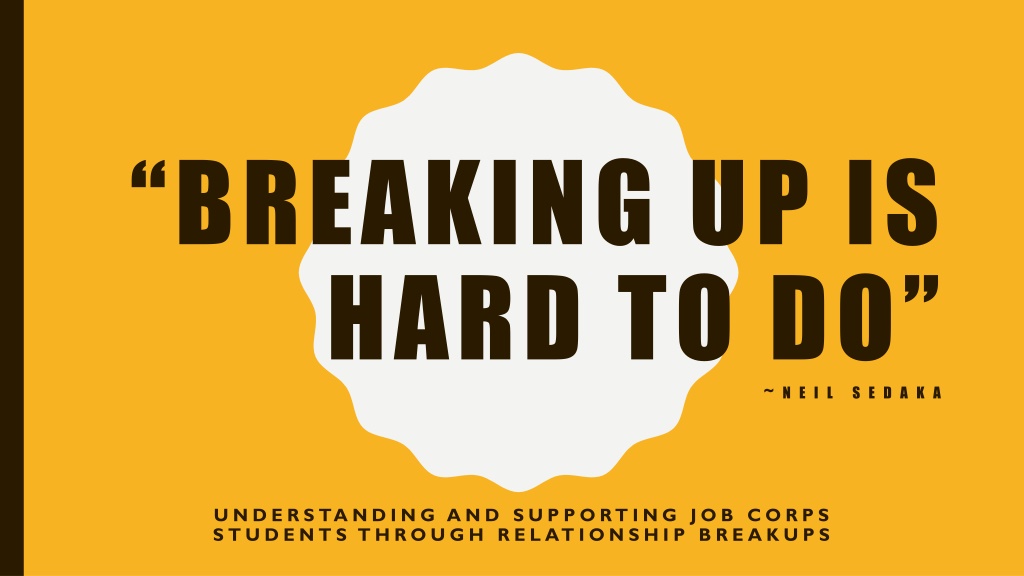
 undefined
undefined






